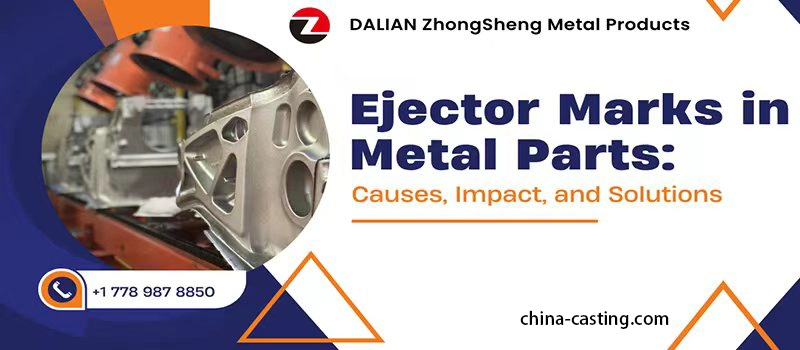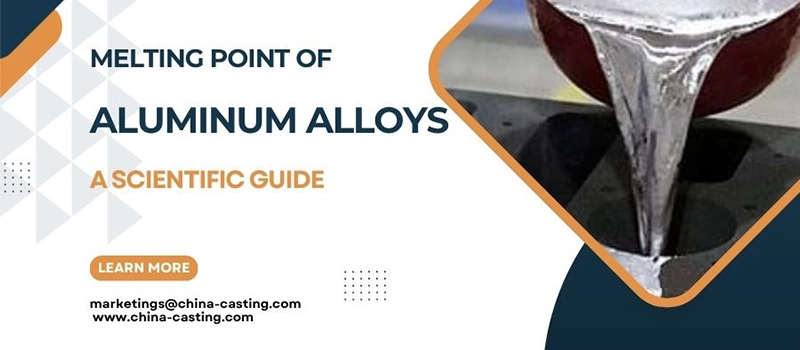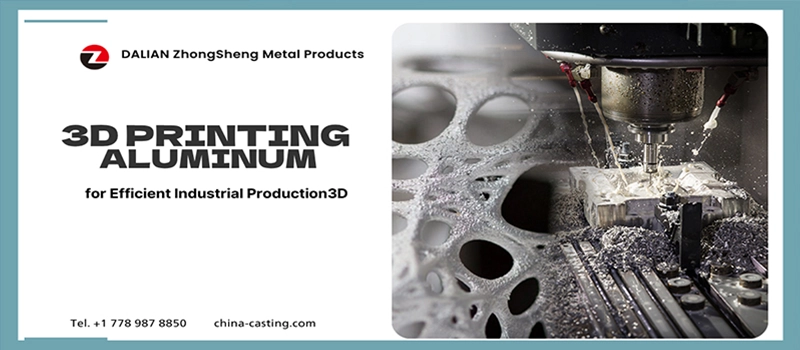The aluminum die casting machine is engineered to produce complex, high-precision metal parts with remarkable consistency. Using high-pressure injection, it shapes molten aluminum into detailed forms at incredible speed — ideal for mass production environments.
Unlike traditional casting methods, this machine minimizes porosity, reduces material waste, and delivers shorter cycle times. It’s available in cold chamber configurations, with automation options to streamline workflow.
That means you get faster output, better part quality, and reduced production costs — all while meeting modern demands for accuracy and efficiency in industrial manufacturing.
What Is an Aluminum Die Casting Machine?
Aluminum die casting machines are precision-engineered equipment used to manufacture complex, high-strength metal components by injecting molten aluminum into a hardened steel mold at high pressure. This process ensures repeatability, dimensional accuracy, and excellent surface finish — making it ideal for producing large volumes of intricate parts in industries such as automotive, aerospace, and electronics.
These machines are specifically built to handle aluminum alloys, which require a cold chamber die casting machine due to the metal’s high melting point. Unlike hot chamber systems used for metals like zinc or magnesium, aluminum die casting machines separate the molten metal from the injection mechanism to prevent corrosion and extend machine lifespan.
Core Components of an Aluminum Die Casting Machine
To understand how this powerful machine operates, it’s important to break down its key components:
- Injection System: Injects molten aluminum into the mold cavity using a hydraulic or mechanical piston. This part determines the machine’s shot volume and injection speed — critical for high-precision applications.
- Clamping Unit: Holds the two halves of the die (mold) together under immense pressure (measured in tons) during the injection and solidification process. The clamping force must match the part size and mold complexity.
- Die/Mold: Custom-designed steel molds where molten aluminum takes shape. These molds are precision-machined and hardened to withstand thousands of cycles.
- Ejection System: Automatically removes the cooled and solidified casting from the die, readying the machine for the next cycle.
- Cooling & Lubrication System: Controls the thermal profile of the die, which directly impacts part quality, cycle time, and mold lifespan.

What Makes an Aluminum Die Casting Machine Unique?
The aluminum die casting machine stands out from other metal forming equipment in several ways:
- It operates under extreme pressure, usually ranging between 150 to 1500 tons, allowing it to reproduce complex geometries with tight tolerances.
- It supports mass production without compromising consistency, thanks to automation features and real-time control systems.
- It is specifically designed to handle high-melting-point aluminum alloys, which would damage traditional hot chamber machines.
- Many modern machines come with programmable logic controllers (PLCs) and human-machine interfaces (HMIs), enabling better process control, diagnostics, and efficiency monitoring.
When Should You Use an Aluminum Die Casting Machine?
If your production line demands:
- High part volumes
- Complex geometries
- Lightweight, corrosion-resistant materials
- Precision and repeatability
Then an aluminum die cast machine is the right solution.
Whether you’re producing automotive gearbox housings, aerospace brackets, or aluminum motor housings, this machine is the backbone of high-speed, high-precision metal manufacturing.
Types of Aluminum Die Casting Machines
Choosing the right aluminum die casting machine depends on your production scale, part complexity, and material requirements. These machines are not one-size-fits-all — their internal systems and operating principles vary greatly. Let’s explore the main types and configurations available on the market today.
Cold Chamber vs. Hot Chamber: Which One Fits Aluminum?
In the world of die casting, machines are typically categorized as hot chamber or cold chamber systems. However, for aluminum die casting, cold chamber machines are the standard.
- Cold Chamber Die Casting Machine:
This design keeps the molten aluminum in a separate furnace and ladles it into the injection chamber. It’s ideal for aluminum and magnesium alloys with high melting points that would corrode or damage a hot chamber system.
Advantages:- Handles high-melting-point metals (aluminum, magnesium)
- Longer machine lifespan
- Better surface finish and dimensional accuracy
- Hot Chamber Die Casting Machine:
While efficient for zinc or lead-based alloys, this type submerges the injection system directly in the molten metal — not suitable for aluminum due to its reactivity with steel components.
Not recommended for aluminum die casting machines
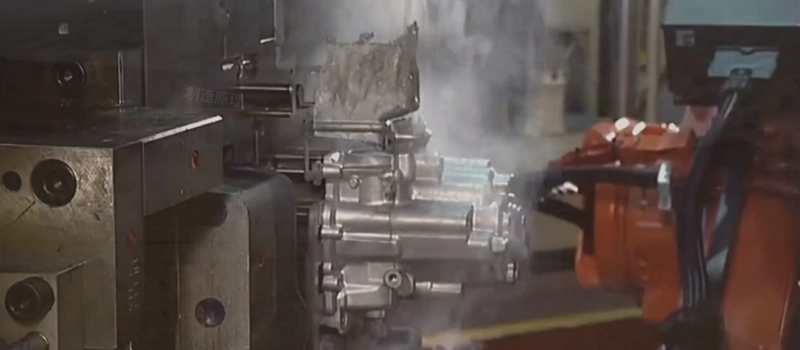
Classification by Drive System
Aluminum die casting machines are also classified by the mechanism used to generate force:
- Hydraulic Die Casting Machines
Use hydraulic cylinders to generate clamping and injection force. They offer strong, smooth operation and are widely used for medium to high-tonnage applications. - Mechanical Die Casting Machines
Use toggle systems and levers for movement. These machines have faster dry cycles but offer less precision control compared to hydraulic systems. - Hybrid Die Casting Machines
Combine hydraulic and mechanical systems for better energy efficiency, faster cycle times, and improved process control. A popular choice for manufacturers scaling up production while keeping energy costs low.
Specialized Aluminum Die Cast Machines
Some machines are purpose-built for specific casting applications, including:
- Aluminum Magnesium Die Casting Machines
These are equipped to handle mixed alloy die casting, especially useful in lightweight automotive parts. They require advanced temperature and pressure control. - Aluminum Rotor Die Casting Machines
Designed for producing rotors in electric motors, especially in EV (electric vehicle) manufacturing. These machines require ultra-high precision and uniform material distribution.
Tip: When searching for your ideal machine, use multiple terms like “aluminum magnesium die casting machines” or “rotor aluminum die casting machine” to locate machines specialized for these applications.
Performance Features That Matter in an Aluminum Die Casting Machine
When evaluating an aluminum die casting machine, understanding the core performance features is critical to ensure consistent product quality, efficient operation, and a high return on investment. These machines must handle molten aluminum under extreme pressure with precision, repeatability, and speed.
Let’s break down the most important technical and functional features that directly impact your manufacturing process.
1. Clamping Force (Machine Tonnage): The Foundation of Die Casting
Tonnage is the industry term for the clamping force applied to keep the die (mold) shut during aluminum injection. It’s one of the most important specs when choosing a machine.
When molten aluminum is injected into the mold at high pressure, it tries to push the mold halves apart. If the clamping force isn’t strong enough, defects like flash, incomplete fills, or even mold damage can occur.
A “500-ton aluminum die casting machine” means it applies 500 tons of pressure to clamp the die shut during the casting cycle.
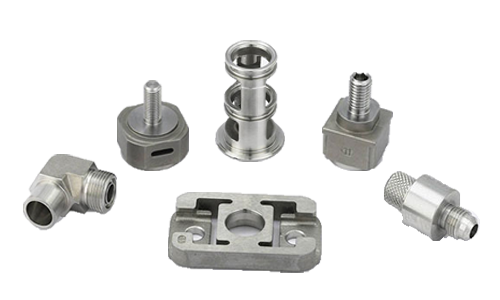
Get a quote now!
✅ How to Choose the Right Tonnage
Your required tonnage depends on:
- The projected area of the part (surface exposed to injection pressure)
- The injection pressure being used
- The number of cavities in your die
General guideline:
Required Tonnage (tons) ≈ (Projected Area × Injection Pressure) ÷ 2000
✅ Common Tonnage Ranges by Part Size
| Machine Tonnage | Best For | Example Products |
|---|---|---|
| 160T–400T | Small Parts | Electrical housings, brackets, sensor mounts |
| 500T–800T | Medium Parts | Engine covers, pump bodies, rotors |
| 1000T+ | Large Parts | Gearboxes, motor housings, structural castings |
Choosing the correct aluminum die casting machine tonnage is not just about size — it’s about balancing cost, part quality, and machine lifespan.
2. Injection System: Speed and Precision in Every Shot
The injection system controls how molten aluminum enters the mold — and directly impacts the dimensional accuracy and surface finish of the final part.
Key parameters include:
- Shot size (amount of aluminum injected)
- Injection speed
- Injection pressure
- Fill time and velocity profile
Advanced machines feature multi-stage injection curves and real-time closed-loop control, essential for casting complex shapes with thin walls or tight tolerances.
3. Cycle Time: The Heartbeat of Production Efficiency
Cycle time is the total duration of one casting operation — from mold closing to casting ejection. A faster cycle time increases output and reduces cost per part.
Modern aluminum die casting machines reduce cycle time with:
- Servo-driven injection systems
- Automated lubrication and die spraying
- Quick die change mechanisms
- Robotic casting extraction arms
Investing in a machine with integrated automation can significantly boost productivity and reduce labor dependency.
4. Mold Temperature Control and Cooling System
Aluminum solidifies quickly, but inconsistent cooling can cause warping, shrinkage, or hot spots.
Key cooling system features to look for:
- Integrated mold cooling channels
- Thermal regulation via temperature controllers
- Real-time monitoring of mold and die temperatures
Effective cooling extends mold life, shortens cycle times, and ensures uniform casting quality.
5. Control System: PLC + HMI for Precision Monitoring
Top-tier aluminum die cast machines come equipped with PLC (Programmable Logic Controllers) and HMI (Human Machine Interface) panels for:
- Full digital control of clamping, injection, and cooling parameters
- Alarm monitoring and diagnostics
- Data logging for production tracking
- Custom process recipe storage
This level of control is crucial for repeatability, troubleshooting, and minimizing scrap rates.
6. Energy Efficiency and Safety Features
Modern machines are designed to reduce operating costs while ensuring workplace safety:
- Energy-saving hydraulic systems (variable pumps, servo motors)
- Hybrid models combining electric and hydraulic functions
- Safety enclosures and light curtains
- Emergency stops, overload protection, and die lock safety systems
These features ensure you meet regulatory compliance, reduce downtime, and operate sustainably.
Applications of Aluminum Die Casting Machines in Industry
Aluminum die casting machines play a central role in modern industrial manufacturing. From lightweight automotive components to precision electronic housings, the versatility and repeatability of this process make it a top choice for high-volume metal part production.
Here’s how various industries are leveraging aluminum die casting machines to meet their performance, cost, and design demands.
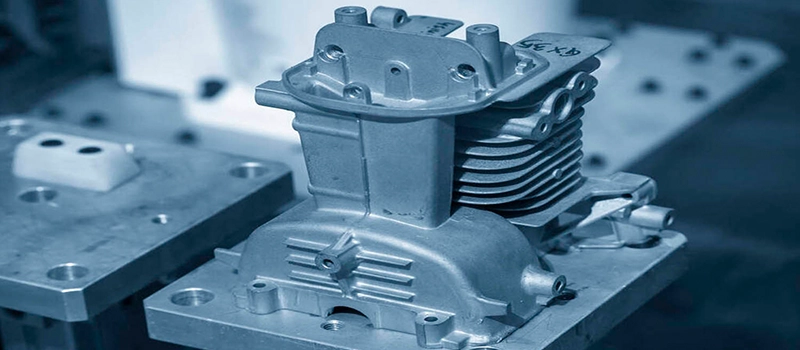
1. Automotive Industry
The automotive sector is by far the largest user of aluminum die casting machines. As the industry shifts toward lightweight materials to improve fuel efficiency and reduce emissions, aluminum components have become essential.
Common aluminum die cast parts in vehicles:
- Transmission housings
- Engine blocks and oil pans
- Brackets and mounts
- Chassis components
- EV motor housings and battery enclosures
These parts require strength, corrosion resistance, and dimensional stability — all achievable through high-pressure aluminum die casting. Additionally, large-tonnage machines (800T–2000T) enable production of complex, monolithic parts, reducing the need for secondary assembly.
2. Electrical and Electronics
Aluminum is an excellent conductor of heat and electricity, making it ideal for electrical and electronic enclosures.
Applications include:
- LED lighting housings
- Heat sinks
- Power tool casings
- Connector housings
- Sensor and control boxes
Using aluminum pressure die casting machines, manufacturers can produce high-precision casings that protect internal electronics while effectively dissipating heat — especially in high-performance or outdoor applications.
3. Aerospace and Defense
In the aerospace sector, reducing weight without sacrificing strength is critical. Aluminum die cast parts deliver this balance, making them ideal for non-structural components.
Typical aerospace parts:
- Brackets
- Avionics housings
- Ducting components
- Satellite and drone casings
These applications require tight tolerances, lightweight alloys, and often magnesium-aluminum casting combinations, handled effectively by advanced aluminum magnesium die casting machines.
4. Consumer Goods and Appliances
From vacuum cleaners to laptops, aluminum die casting enables sleek designs, durable housings, and scalable production.
Common products:
- Laptop frames and keyboard plates
- Small appliance housings
- Door handles and hardware
- Smart device casings
- Furniture supports and bases
Manufacturers benefit from the process’s ability to create thin-walled, complex shapes with clean surfaces — ready for powder coating, anodizing, or other finishing processes.
5. Electric Motors and Rotors (EVs & Industrial Motors)
Rotor aluminum die casting machines are used to produce the rotor cores of induction motors — critical for everything from industrial machinery to electric vehicles.
Why die casting is preferred:
- Ensures precise alignment of rotor bars
- Increases efficiency through better conductivity
- Reduces machining time and waste
With the rise of EVs, high-speed aluminum die cast machines have become a backbone of rotor and stator production, particularly in high-volume OEM environments.
Introduction to Aluminum Die Casting Machine Brands
The performance of your aluminum die casting operation depends not just on the machine type or tonnage — but heavily on the brand behind the machine. Choosing a reliable, well-engineered machine from a trusted manufacturer can determine everything from downtime and maintenance costs to part quality and long-term ROI.
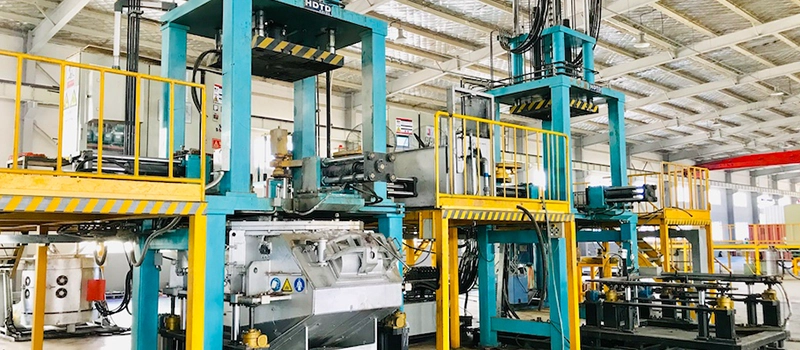
Here’s an overview of the most recognized aluminum die casting machine brands globally — including both international giants and rising Chinese manufacturers.
1. Bühler (Switzerland)
One of the most respected global brands, Bühler die casting machines are known for:
- High precision and tight tolerance control
- Intelligent automation and predictive maintenance systems
- Large-tonnage machines (up to 5600 tons)
- Long lifespan and proven performance in automotive production lines
Ideal for: Tier-1 automotive suppliers and high-volume, high-spec projects
Notable machines: Evolution Series, Carat Series
2. Toshiba Machine (Japan, now Shibaura)
Renowned for its robust hydraulic systems, Toshiba (Shibaura) die casting machines are widely used in Asia and North America.
- Efficient cold chamber aluminum machines
- Smooth shot control and fast dry cycle times
- Wide range from small to large tonnage
- Strong after-sales support globally
Ideal for: Mid-to-large scale operations prioritizing cycle speed and energy efficiency
Popular models: DCX Series, Die-Caster DS
3. UBE Machinery (Japan)
UBE specializes in large die casting machines — often used in automotive structural part production.
- High tonnage: 1000T–5000T
- Strong frame designs for continuous casting
- Integration with foundry automation systems
- Advanced clamping and injection technology
Ideal for: Automotive OEMs, EV battery case production
Key machine series: UBE 5000, UBE 3500
4. LK Machinery (China)
As one of China’s leading die casting equipment brands, LK Machinery is gaining global traction due to:
- Competitive pricing with good performance
- Strong presence in aluminum rotor die casting market
- Customization options for automation, tonnage, and control systems
- Global distribution in Asia, Europe, and North America
Ideal for: Medium-sized manufacturers and export-focused factories
Signature lines: DCC, HOT, and FORZA Series
5. Frech (Germany)
Known for precision and durability, Frech machines are highly regarded in Europe and North America.
- High build quality and engineering precision
- Smart automation for consistent part output
- Good for smaller, highly detailed parts
- Strong in the medical, aerospace, and electronics sectors
Ideal for: High-precision applications and premium product lines
Machine range: Frech K-Series
6. Other Notable Brands
- Italpresse Gauss (Italy): Strong in automated high-pressure casting cells
- Yizumi (China): Affordable and widely used in Southeast Asia
- TVC (India): Known for sturdy builds and regional support
- IDRA (Italy): Part of LK Group, makes machines for large-scale aluminum casting (notably for Tesla Gigafactories)
✅ What to Consider When Choosing a Brand
Before selecting an aluminum die casting machine manufacturer, consider the following:
| Criteria | Why It Matters |
|---|---|
| Machine reliability | Reduces breakdowns and maintenance frequency |
| Technical support | Critical for setup, spare parts, and training |
| Global certifications | CE, ISO9001, GPSR — required for EU/NA markets |
| Software & control system | Impacts ease of operation, diagnostics, automation |
| Availability of spares | Minimizes downtime in case of failure |
| Customization | Tailors machine to your specific casting requirements |
Our Commitment to Advanced Aluminum Die Casting Equipment
At our factory, every aluminum part we produce is powered by high-precision, fully automated die casting machines. We understand that our customers demand not just metal — but performance, reliability, and consistency in every component. That’s why we’ve made significant investments in state-of-the-art die casting equipment and supporting systems.
Need Help? We’re Here for You!
Why Equipment Quality Matters in Aluminum Casting
In aluminum die casting, even the smallest machine variation can affect:
- Surface finish
- Dimensional accuracy
- Porosity control
- Cycle time and delivery speed
To meet the high expectations of global markets like automotive, construction, and electronics, we rely on equipment that combines power, speed, and intelligent control.
What Sets Our Equipment Apart
Our aluminum die casting production lines feature:
- Medium to large-tonnage machines (ranging from 280T to over 800T) for flexibility across part sizes
- Cold chamber die casting systems, optimized for high-temperature aluminum alloys
- Servo-driven and hydraulic hybrid systems, delivering both power and energy efficiency
- PLC and HMI control interfaces, allowing precise process monitoring and real-time adjustments
- Integrated mold temperature control, ensuring casting stability and longer mold life
- Automated ladling, die spraying, and casting extraction, reducing manual handling and cycle times
These systems help us achieve:
- High casting repeatability
- Shorter production lead times
- Minimal scrap and defects
- Reliable batch quality across large volumes
Equipment That Supports Your Business
We don’t just make parts — we build confidence. Our customers choose us because our equipment allows us to:
- Deliver tight-tolerance aluminum castings quickly
- Scale up production without delays
- Maintain stable quality from prototype to mass production
- Offer competitive pricing without cutting corners
Whether your order calls for a small run or a high-volume supply contract, you can be confident that it’s being produced using some of the most capable and reliable aluminum die casting machines in the industry.
This is how we combine precision engineering with production scale — giving you the best of both worlds.
Conclusion
Aluminum die casting machines are the driving force behind precision, strength, and efficiency in modern metal manufacturing. From understanding machine types and tonnage to recognizing their role in key industries, it’s clear that this technology is essential for high-quality, large-scale production.
At our factory, we combine advanced die casting equipment with deep industry experience to deliver consistent, reliable results — no matter the complexity or volume. Whether you need automotive housings, electronic enclosures, or custom industrial parts, we’re equipped to deliver the performance you expect.


